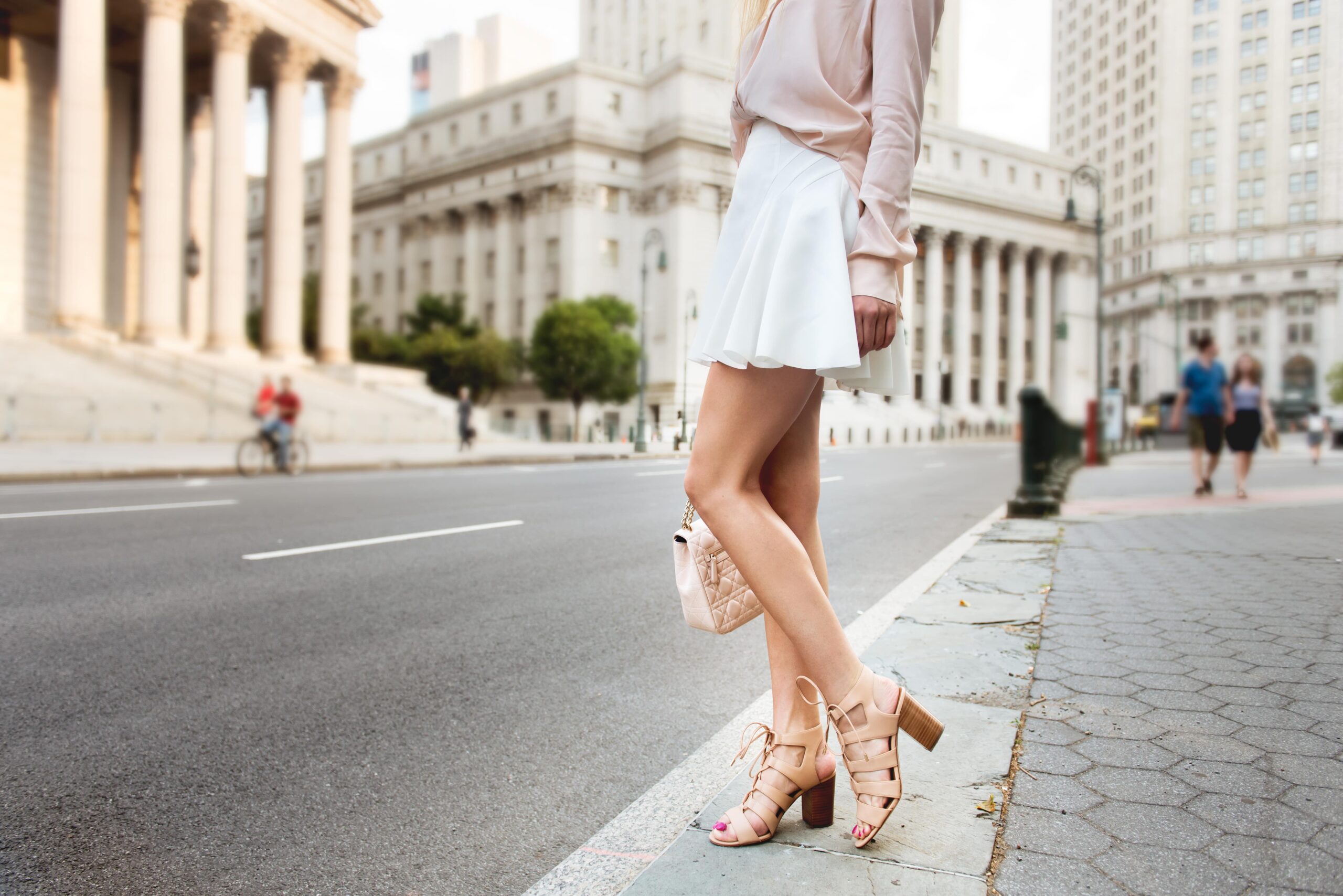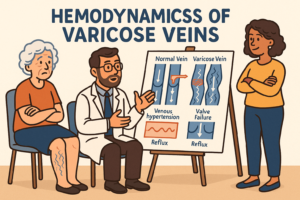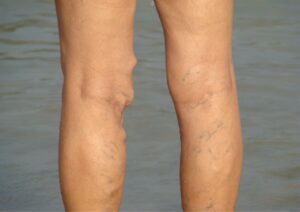Table of Contents
Varicose veins and existing varicose veins are swollen blood vessels or twisted veins that present dysfunction of the vein valves. As a result, blood pools in the varicose vein which presents as a skin bulge.
Varicose veins and spider veins can cause discomfort, pain, swelling, oedema, skin changes, blood clots or deep vein thrombosis, pulmonary embolism, bleeding, venous eczema,dermatitis, skin ulcers and cosmetic concerns.
Untreated varicose veins can lead to increased discomfort pain, and all associated symptoms with varicose veins on the leg veins.
It is important to note that not all of varicose veins develop complications, and not all spider veins require treatment, but if they are causing symptoms or complications, it is advisable to consult a healthcare professional.
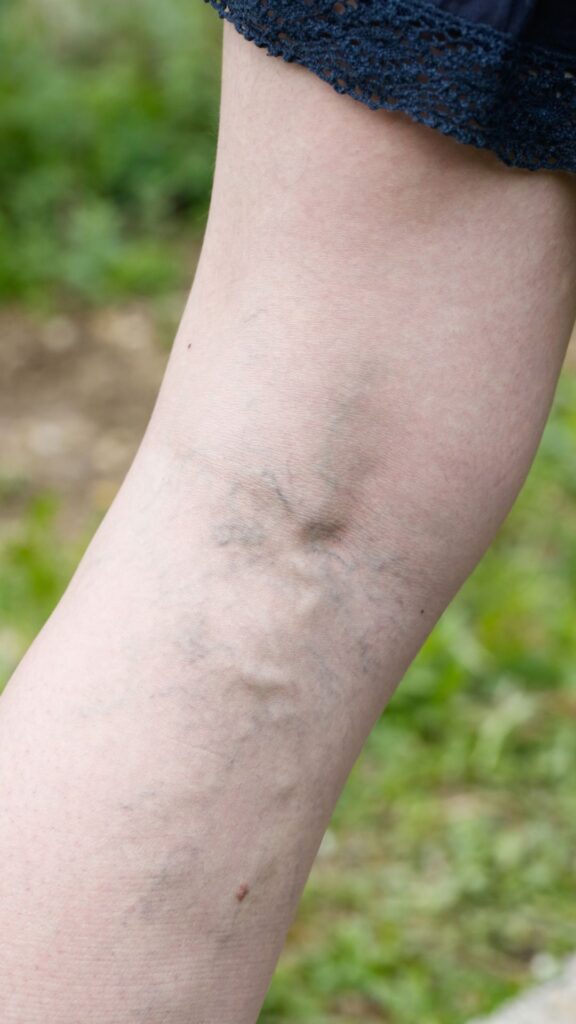
What causes varicose veins?
Varicose veins are caused by a condition known as venous insufficiency, which occurs when the valves within the veins become weakened or damaged.
Common factors that contribute to the development of varicose veins include age, family history, gender, prolonged standing or sitting, obesity, pregnancy, and trauma or injury.
Lifestyle modifications, such as regular exercise, losing weight, avoiding prolonged sitting or standing, and elevating the legs, can help reduce the risk develop varicose veins and alleviate symptoms associated with varicose veins.
Why do I keep getting varicose veins in my legs?
If you are experiencing recurrent varicose veins in your leg veins, it may indicate an underlying condition that predisposes you to their development or a potential issue with previous treatments.
These include venous insufficiency, incomplete treatment, genetic predisposition, hormonal changes, lifestyle factors, and lifestyle choices.
It is advisable to consult with a healthcare professional who has experience in the condition of varicose veins to evaluate your specific situation and recommend appropriate management options to address your recurrent varicose veins effectively.
Treatment options may include minimally invasive procedures, lifestyle modifications, compression stockings, or a combination of approaches tailored to your needs.
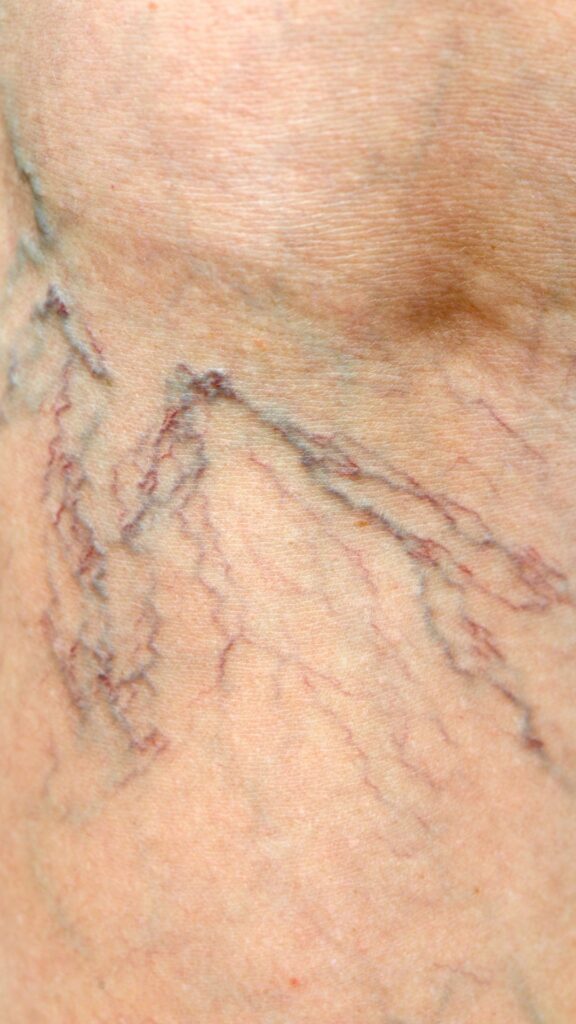
Can varicose veins in legs go away?
Varicose veins do not typically go away on their own, but with appropriate treatment, symptoms can be managed, the progression of varicose veins can be slowed, and the appearance of the varicose veins diagnosed can be improved.
There are various treatment options available for varicose veins, including lifestyle modifications, compression stockings, sclerotherapy, endovenous ablation, and vein stripping.
Treatment for varicose veins can provide relief and cosmetic improvement, but it may not prevent the development of new varicose veins in the future.
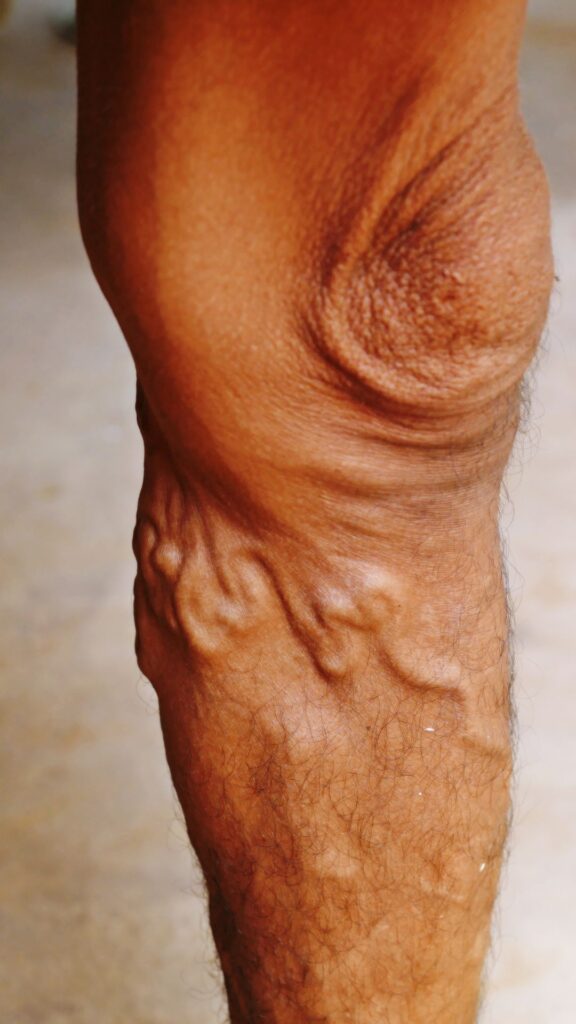
How can I prevent varicose veins and spider veins?
Varicose veins are not completely preventable, but there are measures you can take to reduce the risk of developing them or delay their onset.
These include regular physical activity, maintaining a healthy weight, avoiding prolonged standing or sitting without movement, and wearing compression stockings. Regular physical activity can help improve circulation and strengthen the calf muscles that support the varicose veins.
Maintaining a healthy weight through a balanced diet and regular exercise can reduce the strain on the veins.
Avoid prolonged sitting or standing by taking breaks and incorporating movements that promote circulation. Wearing compression stockings can help improve blood flow and reduce the risk of varicose veins.
Consult with a healthcare professional to determine the appropriate compression level and type of stockings for your needs.
Elevate your legs above the heart level to reduce leg swelling and improve circulation. Avoid tight clothing, take regular breaks during travel, and avoid high heels for prolonged periods.
It is important to note that these preventive measures can help reduce the risk of developing varicose veins, but they may not be able to prevent them entirely.
If you have a family history of varicose veins or other risk factors, it is advisable to consult with a healthcare professional for personalized advice and monitoring.
Can you reduce varicose veins naturally?
Natural remedies can help reduce symptoms of varicose veins, slow down their progression, and promote better vein health.
Physical activity:
maintaining a healthy weight, elevating your legs above heart level, wearing compression stockings, incorporating foods that promote vein health, herbal remedies, avoiding prolonged sitting or standing, healthy leg positioning, cold water therapy, and essential oils.
Regular physical activity can improve circulation and strengthen the leg muscles, while maintaining a healthy weight reduces the strain on the veins and contributes to prevent the progression of varicose veins.
Balanced Diet:
Maintaining a healthy weight reduces the strain on the varicose veins, and contributes to their progression. Elevating your legs above heart level can help alleviate symptoms and reduce swelling.
Compression stockings
Compression stockings can provide external support to the varicose veins, increase blood flow, and reduce symptoms.
Dietary supplements:
Supplements can incorporate foods that promote vein health, herbal remedies, herbal remedies, avoid prolonged sitting or standing, healthy leg positioning, cold water therapy, and essential oils. Flavonoids are a group of natural compounds found in various fruits, vegetables, and herbs. They are known for their antioxidant and anti-inflammatory properties, and some specific types of flavonoids have been studied for their potential benefits in supporting vein health. While flavonoids may not directly treat or cure vein or other blood clots or clot-related conditions, they can potentially contribute to overall vascular health.
Here are a few flavonoid-rich foods that you can include in your diet to encourage blood flow and support vein health:
1.Citrus fruits:
Oranges, grapefruits, lemons, and limes are excellent sources of flavonoids, particularly a type called hesperidin, which has been shown to improve vein function.
2. Berries:
Blueberries, strawberries, raspberries, and blackberries are packed with flavonoids, including anthocyanins, which have been associated with improved blood circulation and reduced vein inflammation.
3. Dark chocolate:
Dark chocolate with a high cocoa content is rich in flavonoids, especially flavanols. Flavanols have shown potential in improving blood flow and promoting vascular health.
4. Leafy greens:
Vegetables like spinach, kale, and broccoli contain flavonoids such as quercetin and kaempferol. These compounds have antioxidant properties and may help reduce inflammation in blood vessels.
5. Green tea:
Green tea contains catechins, a type of flavonoid known for its antioxidant and anti-inflammatory effects. Regular consumption of green tea may have a positive impact on cardiovascular health, including vein health.
6. Garlic:
While not a flavonoid itself, garlic contains a compound called allicin, which has been associated with improved blood circulation and potential benefits for cardiovascular health.
It’s important to note that incorporating these flavonoid-rich foods into your diet can be beneficial for overall health, including vein health. However, if you have specific concerns about your veins or any existing conditions, it’s always recommended to consult with a healthcare professional for personalized advice and treatment options.
While these natural remedies may offer some relief and support, they may not eliminate varicose veins entirely.
If you are experiencing significant discomfort or if the symptoms of varicose veins are affecting your quality of life, it is advisable to consult with a healthcare professional who specializes in vascular conditions for a comprehensive evaluation and appropriate treatment options.
What can I do at home to help varicose veins and spider veins?
The most important details in this text are the self-care measures you can take at home to help manage varicose veins and spider veins and alleviate associated symptoms.
These measures include exercising regularly, maintaining a healthy weight, elevating your legs above heart level, wearing compression stockings, and taking breaks and moving around regularly.
These measures may not eliminate the more severe varicose veins, but they can provide relief and promote better vein health.
Exercise regularly to improve circulation and strengthen the muscles that support the veins. Maintain a healthy weight through a balanced diet and regular exercise as excess weight can contribute to worsen the condition of varicose veins. Elevate your legs above heart level to promote better blood flow and reduce swelling.
Wear compression stockings in the morning and throughout the day, especially if you’ll be sitting or standing for long periods.
Avoid prolonged sitting or standing by taking breaks and moving around regularly. Regular movement helps blood flow, promote circulation, and prevents blood from pooling in the veins. Avoid tight clothing, healthy leg positioning, a balanced diet, cold water therapy, and good skincare.
These self-care measures can provide relief and support, but they may not eliminate varicose veins or spider veins.
If you have concerns about your vein health or if the varicose veins happen to cause significant discomfort, it is advisable to consult with a healthcare professional who has experience in vascular conditions for a thorough evaluation and appropriate treatment options.
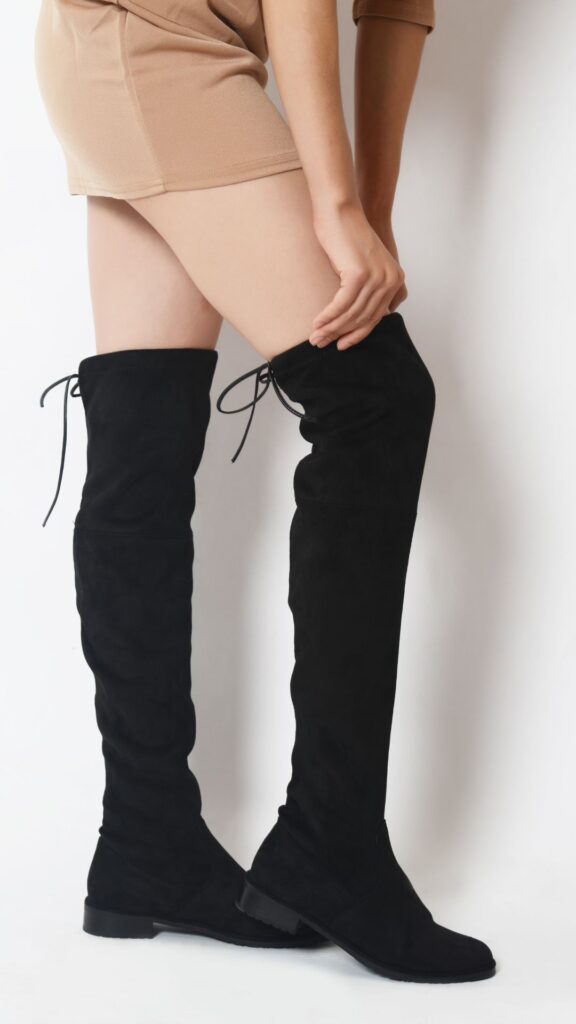
How do compression stockings help treat varicose veins and spider veins?
Compression stockings are commonly used as a conservative treatment option for varicose veins and spider veins.
They work by applying graduated pressure on deeper veins in the legs, with the highest pressure at the ankles and gradually decreasing pressure as the stockings move up the leg.
Compression stockings help improve blood flow, reduce pooling of blood in the veins, enhance vein valve function, reduce vein diameter, and alleviate symptoms associated with these conditions.
It is important to note that compression stockings are not a cure for varicose veins or spider veins, but they can provide symptomatic relief, encourage blood flow and help slow down the progression of the varicose vein condition.
It is advisable to consult with a healthcare professional, such as a varicose vein specialist or a vascular surgeon, who can evaluate your specific situation and recommend the most appropriate treatment options for your varicose vein and health.
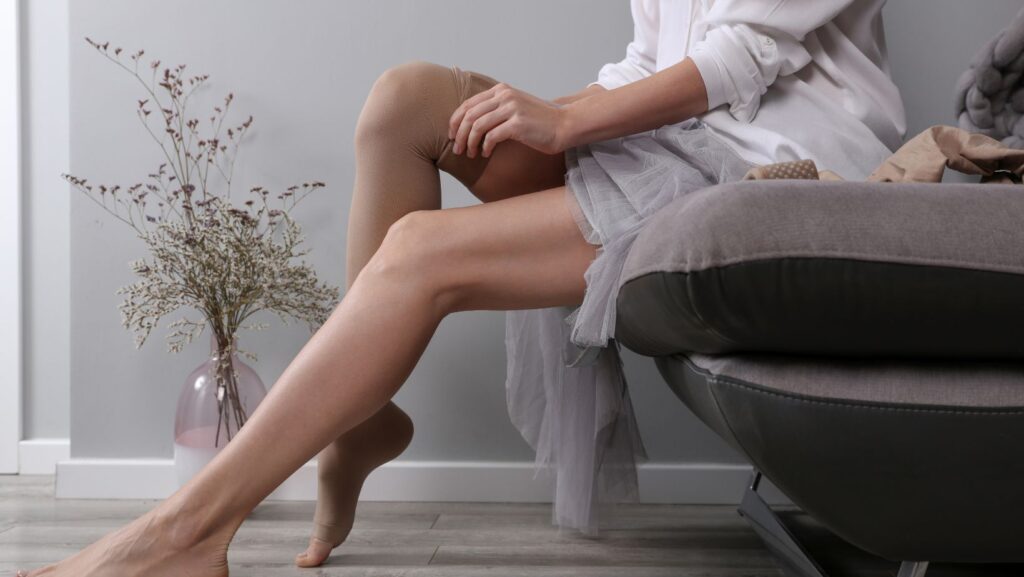
What else can I do to treat varicose veins and spider veins without having surgery?
Traditionnally, Patients have been treated in the past with vein stripping as a vascular surgery option.
Although, today there are several non-surgical treatment options available regarding the treatment for varicose veins and spider veins.
While these treatments may not completely eliminate the varicose veins affecting you, they can help improve symptoms and the appearance of the severe varicose veins themselves. Here are some non-surgical treatments for varicose veins and spider veins:
1. Sclerotherapy:
Sclerotherapy is a common and effective non-surgical treatment for both varicose veins and spider veins. It involves injecting a solution directly into the affected veins, causing them to shrink as the vein slowly fade away. This injection therapy works by acting on the vein walls.
Sclerotherapy is typically performed in an outpatient setting and does not require anesthesia. Multiple sessions may be needed for optimal results.
2. Laser or light therapy:
Laser therapy or intense pulsed light (IPL) therapy can be a common treatment used to treat spider veins and smaller varicose veins. These treatments use heat energy to target and seal off the veins, causing them to gradually fade over time.
Laser therapy or light therapy is less minimally invasive treatments than surgery and often requires multiple sessions for optimal results.
3. Endovenous laser treatment (EVLT):
EVLT is a minimally invasive procedure used how to prevent varicose veins or treat larger varicose veins. It involves inserting a laser fiber into the affected vein and using laser energy on sealed vein to heat and seal it.
The procedure is performed under local anesthesia and usually every few weeks and requires minimal downtime.
4. Radiofrequency ablation:
Radiofrequency ablation is a similar procedure to EVLT but uses radiofrequency energy instead of laser energy to heat blood pressure and close off the affected veins. It is also a minimally invasive medical procedure, that can be performed under local anesthesia.
It’s important to consult with a healthcare professional, such as a vein specialist or a vascular surgeon, to determine the most suitable medical treatment options for your specific condition.
They can evaluate the severity of your veins and recommend the appropriate non-surgical treatments for your individual needs.
References:
https://www.hopkinsmedicine.org/health/conditions-and-diseases/varicose-veins
https://www.betterhealth.vic.gov.au/health/conditionsandtreatments/varicose-veins-and-spider-veins
https://www.womenshealth.gov/a-z-topics/varicose-veins-and-spider-veins
https://www.mayoclinic.org/diseases-conditions/varicose-veins/diagnosis-treatment/drc-20350649
https://my.clevelandclinic.org/health/diseases/4722-varicose-veins

